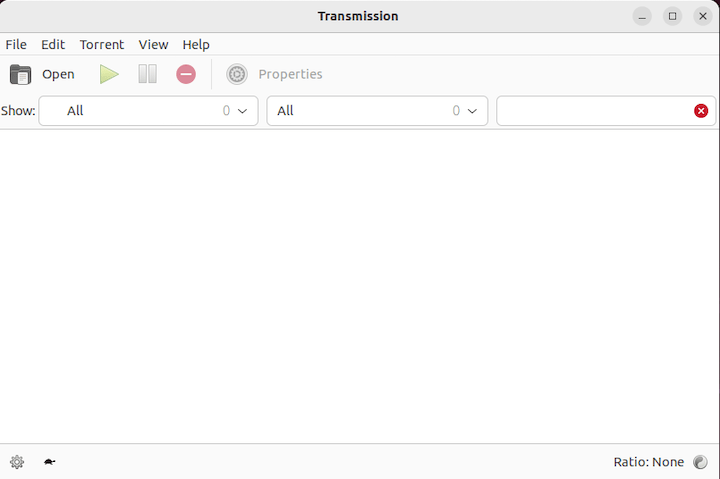How To Install Transmission on Ubuntu 24.04 LTS

In this tutorial, we will show you how to install Transmission on Ubuntu 24.04 LTS. Transmission is a free, open-source BitTorrent client that is both easy to use and highly efficient. It supports a range of features, including Local Peer Discovery, encryption, and support for Magnet links, making it a versatile choice for users. Unlike many other BitTorrent clients, Transmission is known for its minimal resource usage, ensuring that your system remains responsive even when downloading large files.
The BitTorrent protocol, which Transmission utilizes, allows for decentralized file sharing, distributing the load across multiple users. This method not only speeds up downloads but also reduces the strain on any single server, making it a preferred choice for distributing large files.
This article assumes you have at least basic knowledge of Linux, know how to use the shell, and most importantly, you host your site on your own VPS. The installation is quite simple and assumes you are running in the root account, if not you may need to add ‘sudo‘ to the commands to get root privileges. I will show you the step-by-step installation of the Transmission BitTorrent clients on Ubuntu 24.04 (Noble Numbat). You can follow the same instructions for Ubuntu 22.04 and any other Debian-based distribution like Linux Mint, Elementary OS, Pop!_OS, and more as well.
Prerequisites
- A server running one of the following operating systems: Ubuntu and any other Debian-based distribution like Linux Mint.
- It’s recommended that you use a fresh OS install to prevent any potential issues.
- SSH access to the server (or just open Terminal if you’re on a desktop).
- An active internet connection. You’ll need an internet connection to download the necessary packages and dependencies.
- An Ubuntu 24.04 system with root access or a user with sudo privileges.
Install Transmission on Ubuntu 24.04
Step 1. Preparing Your System.
Before diving into the installation process, it’s crucial to ensure that your system is up-to-date. This step minimizes potential conflicts and ensures that you have the latest security patches.
Open a terminal and execute the following commands to update your system:
sudo apt update sudo apt upgrade
These commands will refresh the package lists and upgrade any outdated packages on your system, setting a solid foundation for the Transmission installation.
Step 2. Installing Transmission on Ubuntu 24.04.
- Installing Transmission from the Ubuntu Package Repository
The Ubuntu package repository is a vast collection of software packages maintained and verified by the Ubuntu community. Installing Transmission from the repository ensures compatibility with your Ubuntu 24.04 LTS system and provides a straightforward installation process. To install Transmission from the Ubuntu package repository, follow these steps:
To proceed, use the following command:
sudo apt install transmission
This command installs the desktop version of Transmission. If you require the daemon version for server use, you can install it with:
sudo apt install transmission-daemon
Once the installation is complete, you can access Transmission through the Ubuntu application menu or by running the transmission-gtk command for the desktop UI version or transmission-daemon for the headless version.
- Installing Transmission via PPA
A Personal Package Archive (PPA) is a third-party software repository that allows developers to distribute their own packages for Ubuntu. Using a PPA can provide access to more recent versions of Transmission or versions with specific modifications. However, it’s essential to exercise caution when using PPAs, as they are not officially supported by Ubuntu and may introduce compatibility issues or security risks. To install Transmission via a PPA, follow these steps:
To add a PPA and install Transmission, execute these commands:
sudo add-apt-repository ppa:ubuntuhandbook1/transmission sudo apt update sudo apt install transmission
While PPAs offer the latest software, they can introduce stability risks, so use them judiciously.
- Installing Transmission via Snap
Snap is a package management system developed by Canonical, the company behind Ubuntu. Snap packages are self-contained, isolated from the rest of the system, and automatically updated, making them a convenient and secure option for installing applications.
To install Transmission using Snap, follow these steps:
sudo snap install transmission
Once the installation is finished, you can launch Transmission by searching for it in the application menu or by running transmission in the terminal.

Step 3. Configuring Transmission.
After installing Transmission on Ubuntu 24.04 LTS, you may want to customize its settings to suit your preferences and optimize its performance. Here are some common configuration options to consider:
-
- Bandwidth Limits: To manage your internet speed and prevent Transmission from consuming too much bandwidth, you can set download and upload limits. Open the Transmission settings and navigate to the “Speed” tab to adjust these limits according to your needs.
- Download and Incomplete Directories: By default, Transmission saves downloaded files to your home directory and stores incomplete downloads in a separate directory. To change these locations, open the Transmission settings, go to the “Folders” tab, and specify your desired directories for downloads and incomplete files.
- Encryption: To ensure secure file sharing, enable encryption in the Transmission settings. Navigate to the “Privacy” tab and set the encryption mode to “Require encryption” or “Prefer encryption” depending on your security needs.
- Peer Port: If you experience connectivity issues or slow download speeds, you may need to configure your router to forward the peer port used by Transmission. By default, Transmission uses port 51413. Open the Transmission settings, go to the “Network” tab, and note the “Peer listening port” value. Then, consult your router’s documentation to set up port forwarding for this specific port.
Remember to save your changes after modifying any settings in Transmission. You can access these settings by clicking on the “Edit” menu and selecting “Preferences” when using the desktop UI, or by editing the configuration file located at ~/.config/transmission-daemon/settings.json when using the daemon version.
Step 4. Accessing Transmission’s Web Interface
One of the most convenient features of Transmission is its built-in web interface, which allows you to manage your torrents remotely using a web browser. This is particularly useful when running Transmission on a headless server or when you want to access your torrents from another device. To access Transmission’s web interface, follow these steps:
http://IPADDRESS:9091
If prompted, enter your username and password. By default, the username is “transmission” and the password is also “transmission”. You can change these credentials in the Transmission settings under the “Remote” tab.
Congratulations! You have successfully installed Transmission. Thanks for using this tutorial for installing the Transmission BitTorrent clients on the Ubuntu 24.04 LTS system. For additional help or useful information, we recommend you check the official Transmission website.